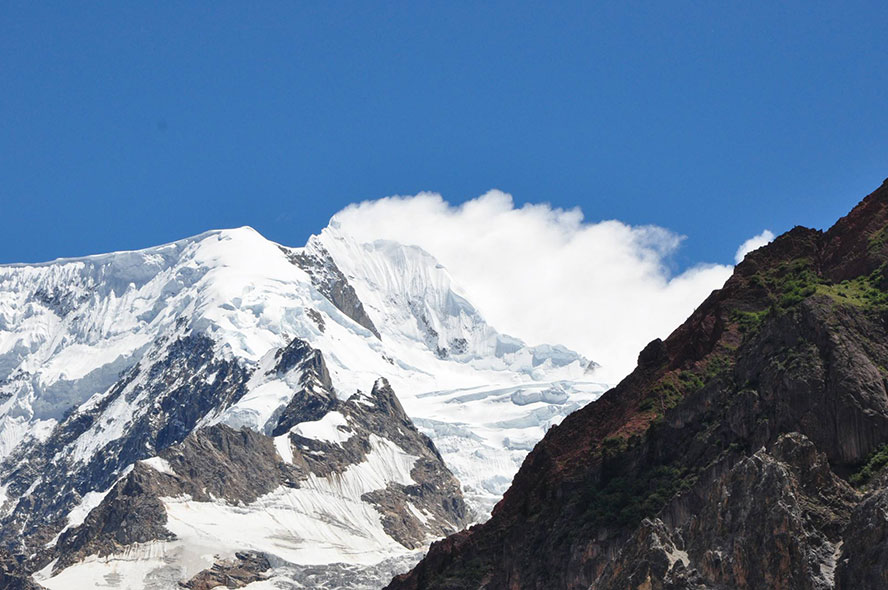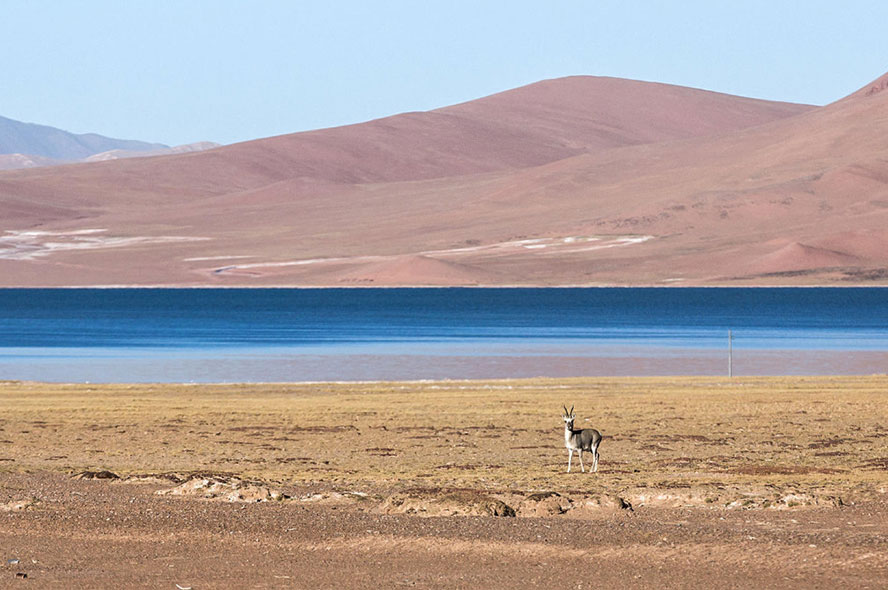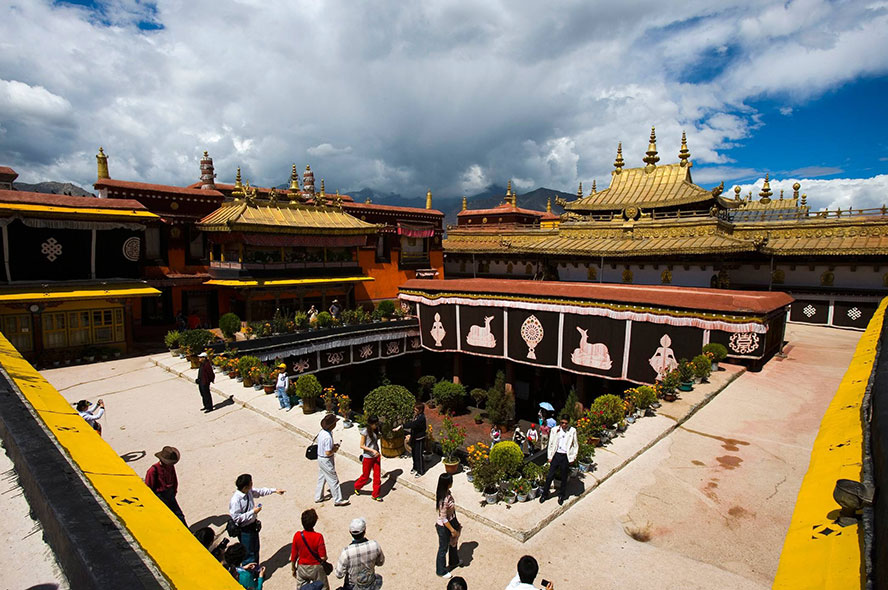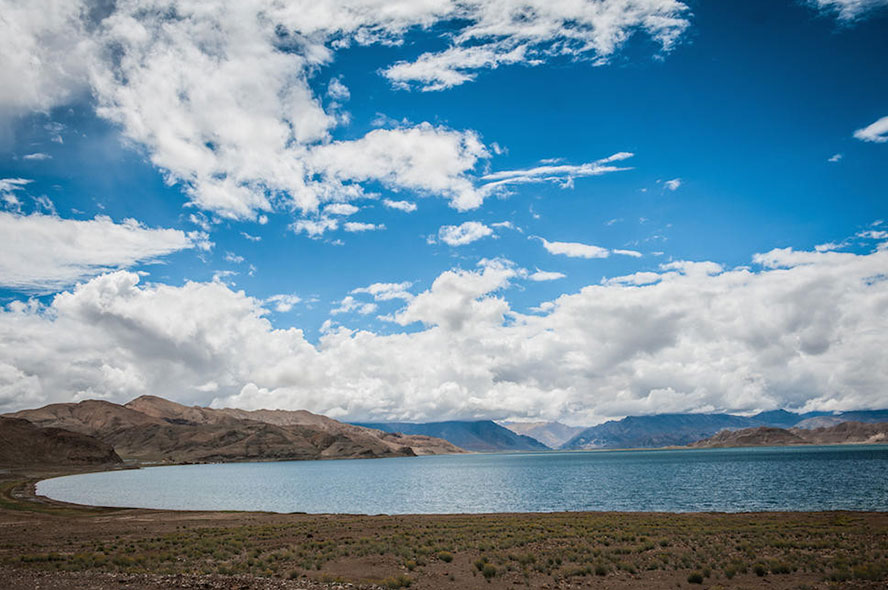Sera Monastery, the full name of which is "Sera Mahayana Monastery", is one of the six main temples of the Gelug Sect of Tibetan Buddhism as well as one of the three major temples in Lhasa, together with Drepung Monastery and Ganden Monastery. Although Sera Monastery is the youngest among the three, it is famous for not only its exquisite architectures and precious cultural relics, but also famous for its Buddhism debating. A journey to Lhasa without watching the debate in Sera Monastery is not a complete Tibet journey.
Basic introduction to the Sera Monastery
- Altitude: 3700 meters
- Location: at the foot of the Serawoze Mountain of the northern suburb of Lhasa
- Distance from the Potala Palace: about 7km, 20 minutes’ drive.
- Distance from the Jokhang Temple: 6km
- Surrounding environment: Sera Temple is located at the foot of the Serawoze Mountain of the northern suburb of Lhasa, surrounded by many lush trees. It covers a large area and you need to visit the temple on foot. The difference between visiting Sera Monastery and Drepung Monastery is that you will feel more tired when you visit the Drepung Monastery, while it will be less tired when you visit the Sera Monastery because of the flatter ground.
Introduction to the building complex of Sera Monastery
Sera Monastery is large in scale and covers an area of about 115,000 square meters. There is a river in front of the temple. Tsochen Hall and the three Buddhist colleges as center (Je College, Seramai College, and Aba College), dozens of Kamcuns (villages lived by monks) were built in the temple.
In early times, Seramai College and Aba College were the center of Sera Monastery, on the basis of which the temple has undergone expansion. Therefore, there is no overall planning on the layout of the temple. However, although there are many buildings in the temple, this place looks not dense or cluttered at all. The main buildings are prominent, representing the unique style of a Gelug temple.
The Tsochen Hall supported by 108 large pillars is the largest building in Sera Monastery and can accommodate more than 8,000 monks during religious ceremonies. The statue of the founder of the temple, Shvakya-Ye-Shes, is enshrined in the temple. The hat on the top of the statue is very unique, as there are Sanskrit characters on it. This hat was personally bestowed by Emperor Yongle of the Ming Dynasty when Shvakya-Ye-Shes was giving Buddhism lessons in the mainland. You can go and have a look at the hat.
In addition to the Tsochen Hall, another hall in Sera Monastery is also very famous - the Hayagriva Hall, which enshrines the statue of Hayagriva ("having the neck of a horse"). Legend has it that when Tsongkhapa, the founder of the Gelug Sect of Tibetan Buddhism, was taking a walk, he heard the sounds of horses. Then he followed the sounds and excavated the ground, and finally found the statue of Hayagriva. It is said that the statue has strong power of getting rid of evil spirits, so it is also the highlight of a visit to Sera Monastery. You can join the believers to pray for blessings.
Besides, there is a Buddha Show Platform in the northeast of Sera Monastery, where you can enjoy a bird's eye view of the entire Sera Monastery. During the annual Shoton Festival, a ceremonial ritual will be held by hanging a giant Buddha tapestry on the Buddha Show Platform. Such a ceremonial ritual will also be held in Drepung Monastery.
Introduction to the Buddhism Debating in Sera Monastery
Buddhism Debating
The debate is a discussion of Buddhist knowledge, and it is also a way of study for the lamas. There will be fierce argument with both side of the debaters using various gestures to enhance the intensity of the debate. For example, clapping the hands means that one side of the debaters are going to ask a question, or means that the other side of the debaters should answer the question quickly. And turning the Buddha beads means that the debaters are wishing to get strength from the Buddha to win the debate. You will be impressed a lot by the atmosphere there.
Sera Monastery is not the only temple where people can watch the Buddhism debating, but the debating here is relatively large in scale and more famous.
Location and time of the debating
The outdoor debating of Sera Monastery has fixed place and time. The debating place is the Debate Yard in Sera Monastery.
The debate begins at 3 pm per day and it will last for 2 hours. You can watch the debate freely. There is no debate on weekends and some special festivals, so you need to make a clear plan when you choose the Tibet tour group if you want to watch the debate. Otherwise you may miss the chance to watch the intense Buddhism debating in Sera Monastery.
As the debate begins in the afternoon, the tour to Sera Monastery is also generally arranged in the afternoon. After feeling the atmosphere of the debate, you can visit other buildings and historical relics in the temple under the guidance of the tour guide.
The debating process
Many monks dressed in red robes will walk into the Debate Yard at three o'clock. The debate will begin after a brief opening ceremony.
Before debating, the lamas will be divided into pair or small groups, with one or one group standing and asking questions, and the other one or the other group sitting and answering questions. The debate topic covers all aspects of Tibetan Buddhism. When a question is raised, the sitting monk(s) must give response within seconds.
During the following 2 hours, you can see intense arguments along with some typical gestures made by the standing lamas, such as glaring, turning the beads, standing in one leg, and vigorously clapping their hands, etc. All of these gestures are made for one reason – to beat the opponents.
What if the tourists don’t understand what the lamas are debating? Most tourists could not understand the content of the debate, and they do not know the result of the debate, either. So what actually are they watching during the debate?
In fact, even if you don't understand Tibetan language, you can still find the debate excellent and exciting from the lamas’ gestures and attitudes, and you can also feel their sincerity in discussing Buddhism.
Although tourists may not be able to understand the content and meaning of the Buddhism debating, they can feel the lamas’ piety and yearning for Buddhism. When the debate begins, the sounds of debating can be heard in every corner of the temple and even the mountain in the rear of the temple. The sounds can be so noisy that people who don't know the debate may think that there is a quarrel and a fight in the temple. Yet you can feel another kind of tranquility and peace in such environment.
Things should be noticed while watching the Buddhism debating
Things should be noticed while watching the Buddhism debating
1. Be quiet. Try to keep quiet while watching the debate. If you want to discuss with your peers, please keep your voice down as low as possible and don't shout loudly.
2. Taking pictures. You can use your mobile phone to record this grand event, but you can’t record it with professional photography equipment, as tourists are not allowed to take pictures of the debate with equipment except for mobile phones.
3. About the venue. The debating venue is a separate yard with a yellow line as the boundary, and visitors should not step into the yellow line area. There is designated area for viewers to watch the debate. You can’t take away the cushions prepared for the lamas.
4. Dress. Although there is no such regulations that tourists must dress properly to enter the temple, tourists should wear proper clothes and should not wear revealing clothing to enter the temple for showing respect to Buddhism tradition.
5. Shopping. There is no place for shopping in the temple, but there are small shops outside, so tourists are recommended to buy drinking water before entering the temple.
6. Etiquette. Don't arbitrarily imitate the movements and facial expressions of the lamas while they are debating.
Cultural relics and crafts in Sera Monastery
Sera Monastery collects many treasures such as Buddhist scriptures, Buddha statues, robes and other artifacts that were bestowed by the emperor of the Ming Dynasty in Beijing. In addition, there are also many historical treasures in the temple, such as the Buddhist scripture Tripitaka bestowed by Emperor Yongle, the wooden carvings of the Eighteen Arhats and the Four Heavenly Kings, and Kangyur and Dangyur (both are parts of the Tripitaka) written in golden inks. In addition, there are also tens of thousands of copper gold alloy Buddha statues made in Tibet, brass Buddha statues from India, Buddhist classics, murals, and Thangka in the temple.
Scenery of the mountain in the rear of Sera Monastery
From the mountain in the rear of Sera Monastery, you can see the Potala Palace and the city of Lhasa. There are many stone carvings in the Serawoze Mountain. The content of the stone carvings are mainly six-character mantras and carvings of Buddha. The six-character mantras are pronounced like “Om Mani Padme Hum”, and these are the words that Buddhists recite every day. They believe the six-character mantras are the root of everything, and disasters can be eliminated if they keep reciting them every day. The different kinds of carvings of Buddha are also unique scenery of the mountain.
Sera Monastery is famous for its Buddhism debating. Many tourists come here just for listening to a debate and gain more inspiration during their visit to the temple. Sera Monastery is located on the suburb of the city, but you can go there easily through many kinds of vehicles, so you shouldn’t miss Sera Monastery while visiting Lhasa.







































 Data in submission...
Data in submission...